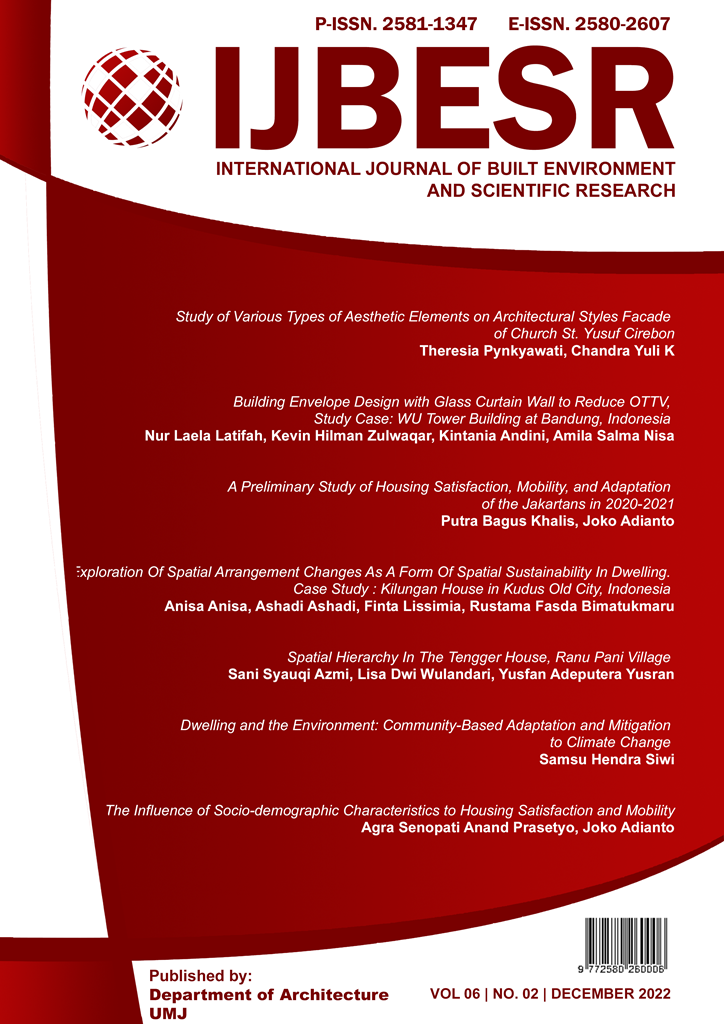Building Envelope Design with Glass Curtain Wall to Reduce OTTV, Study Case: WU Tower Building at Bandung, Indonesia
DOI:
https://doi.org/10.24853/ijbesr.6.2.97-110Keywords:
Building Design, Building Envelope, Glass Specification, Overall Thermal Transfer ValueAbstract
Indonesia has the potential to get exposure to frontal solar radiation with a high enough intensity so that excessive external thermal loads received by building can cause thermal discomfort for users.Generally, the building envelope of office building is using a glass curtain wall, this causes increasing the consumption of electrical energy.For this reason, it is very important to design the right building envelope in order to reduce the heat transfer.As a tool to determine the external thermal load received by the building envelope is OTTV. The analysis was carried out quantitatively and qualitatively based on data on the condition of the WU Tower building which became the case.The value of the benefits obtained from this research is the acquisition of proposals for improving the design of the building envelope in Bandung which can be applied to mixed use buildings with the main function of the office.Downloads
Published
2022-12-19
Issue
Section
Articles







